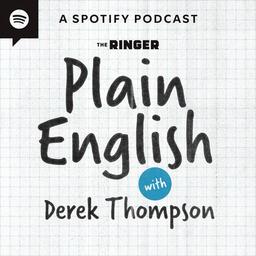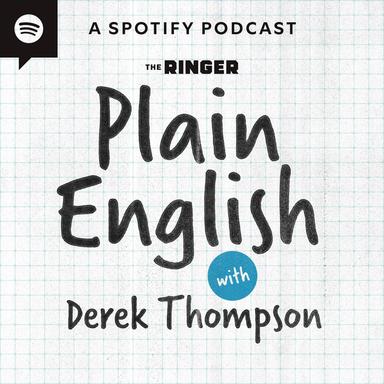The early forecast for the next 10 days in Las Vegas is punishingly consistent: 107-to-110-degree highs with humidity low enough to fry your sinuses. Nothing new, nothing out of the ordinary. But at Las Vegas summer league, inside the HVAC miracles that are the Thomas & Mack Center and Cox Pavilion, it’s all about wild fluctuations in player performance and public opinion. Remember the panic of Wemby’s first game? Remember the collective exhale after his second? The exaltation, fear, and loathing—it’s all a part of the ride.
Maybe a more practical soul would try to separate the signal from the noise, but like the city that hosts it, the LVSL is everything, everywhere, all at once. It’s best to simply embrace the chaos. This is a time for debuts and last stands, for star-making performances and performative concern trolling. It’s all one big Rorschach test; it’s all one big desert mirage. Maybe it’s all meaningless, but there are nuggets of intrigue in every game if you’re willing to dig for them.
Here’s what I’ll be tuning in to this weekend:
Point Flagg is on the loose.
“When you see a player’s comfort level with the ball—no matter what size—we wanted to see it in game action,” Jason Kidd told reporters more than a decade ago. “We slowly have started letting him have the ball and running the offense.”
The then-Bucks head coach was talking about a 19-year-old Giannis Antetokounmpo, but all these years later, one of the purest point guards in NBA history still holds firm that the position is as much nurture as it is nature. “I want to put him in at the point guard,” Kidd said last month at Cooper Flagg’s introductory press conference. “I’m excited about giving [Flagg] the ball against the Lakers and see what happens. Let’s get it started right off the bat.”

Flagg is used to trials by fire. He’s used to being fast-tracked. He was a U.S. men’s select team standout at the age of 17, playing alongside some of the best young talents in the NBA before ever logging a minute of college playing time. He demonstrated near-exponential growth in his shooting and ballhandling ability throughout his freshman season at Duke. The next challenge will be dealing with the pressure of being at the top of every team’s scouting report at the highest level of basketball. In this point guard experiment, ball security might be the biggest pressure point, because Flagg is already one of the best passers in a class full of savants. How Flagg utilizes his connective passing instincts to augment his growth as a driver will determine how successful Kidd’s second go at a Build-a-Point Workshop can be.
But this is the time to check for glimmers of something more. For as long as summer league has existed, it’s been an incubator for ideas whose time is approaching. I’ve referenced it before, and I’ll reference it until I’m dead: Kawhi Leonard became Kawhi Leonard in the two games he played at summer league in 2012, where the Spurs put a 3-and-D prototype wing under a stress test as the team’s lead orchestrator. He scored 50 points across those two games. He was completely undeniable. This is the vision for Flagg in Vegas: Give the league a taste of what’s to come and a sense of just how much room there is left for him to grow.
The Nets’ weird, new era begins now.
For the Nets, complying with Occam’s razor meant keeping all of their NBA-record five first-round picks. The principle suggests that the simplest solution to a problem is often the correct one. Time will tell whether that holds true for Brooklyn. Yet, despite following the path of least resistance, the Nets’ draft route also felt like the least likely outcome. When Brooklyn stuck to its guns rather than consolidating its haul, my first thought was: Why? My second thought was: Wait, will all five picks start at summer league? That could be incredible.
Arrange the five by height in ascending order, and they resemble a quintessential household on hardwood: 6-foot-3 Nolan Traoré (no. 19 overall), 6-foot-5 Ben Saraf (no. 26), 6-foot-5 Drake Powell (no. 22), 6-foot-8 Egor Demin (no. 8), and 6-foot-11 Danny Wolf (no. 27). But that’s where the orthodoxy ends. Powell, who unfortunately will miss summer league due to a knee injury, is the only player of the five who hit 3s at an above-average clip last year—everyone else’s most noteworthy NBA qualities are their creativity and vision. The Nets scored some of the best playmakers in the draft and are hoping to manifest a sort of cumulative ball-finds-energy effect.
In a way, Brooklyn’s experiment in Vegas is antithetical to the proven formula of the tournament. Summer league is built for bucket getters, for self-creators who can take advantage of rudimentary, slapdash defensive schemes cobbled together in the interest of time and availability. The Nets are trying to build a hivemind whose brilliance is seen after an advantage has been created. Traoré’s transportative first step is arguably best in class, but he’s had his troubles finishing around the rim, and his jumper is as streaky as they come; Demin, Saraf, and Wolf are some of the most imaginative passers of their class, but they could struggle to break down defenses without a solid screener. The Nets are building off the premise that the ball moves faster than the player. Is it possible to run an efficient five-out offense without a truly stable shooter on the floor? The Nets are about to find out.
Welcome back, DaRon Holmes II.
Almost exactly one year ago, Holmes tore his right Achilles tendon in his very first Las Vegas summer league game with the Denver Nuggets. If we consider summer league action the unofficial start to the NBA season, Holmes’s injury was the first in a record-breaking season of Achilles tears. James Wiseman was felled in Indiana’s regular-season opener, and Tyrese Haliburton went down in Game 7 of the NBA Finals. Isaiah Jackson, Dejounte Murray, Dru Smith, Jayson Tatum, and Damian Lillard all suffered ruptures in between. That’s eight cases in the past calendar year. No other season in NBA history had seen more than four.
One year later, Holmes is a “full go” for his second summer league stint, and it couldn’t have come at a better time. Though the Nuggets recently agreed to send Dario Saric to the Kings in exchange for Jonas Valanciunas, there is legitimate noise indicating that Valanciunas would prefer to be released from his NBA contract to sign a more lucrative deal with the Greek club Panathinaikos. Valanciunas, 33, would easily be the best backup center that Nikola Jokic has had in his prime, and Denver reportedly expects the Lithuanian to honor the two remaining seasons on his contract. Still, for a team feeling the pressure to capitalize on the apex years of an all-time great, it’s always good to have options.

Holmes, the no. 22 selection in the 2024 draft, will likely be eased into play with kid gloves in Vegas, but any flashes that emerge in the desert will be vital data for the organization. The former Flyer is exactly the kind of player the Nuggets have been mining for: another crack at a two-way big after Zeke Nnaji’s stagnation over the past five seasons. Holmes was one of the most productive big men in the nation during the 2023-24 college season, demonstrating roll and pop versatility in the two-man game: He had excellent numbers scoring around the rim and shot 38.6 percent from 3 in his final season. Holmes’s offensive malleability and tenacity on the boards figure to hold steady; it’s the defense post-injury that the team will be monitoring. While Holmes possesses an athletic 6-foot-10 frame and an outstanding block rate across his 102 games at Dayton, he often played with a rigidity on defense that left him prone out on the perimeter—a tendency that will likely be exacerbated until he rebuilds trust in his lower body.
Do the Spurs have their final core pieces in place?
The Spurs already have a few summer league games under their belt at the California Classic, but they opted to save Dylan Harper’s pro debut for Las Vegas, out of an abundance of caution following what the team deemed a minor groin injury. How much that will impact Harper’s workload is still up in the air, but any opportunity to take in Harper’s immense talent firsthand will be welcome. If Flagg was in a tier of his own in the 2025 draft, so was Harper just below him. And if Victor Wembanyama is San Antonio’s evolutionary Tim Duncan, Harper might just be its next Manu Ginóbili.
Harper’s run-jump explosiveness is unremarkable, but that’s only one piece of the puzzle. The biomechanics experts at P3 graded Harper’s deceleration and lateral force production at levels comparable to those of James Harden and Luka Doncic. Some of the most tantalizing gifts at Harper’s disposal are his preternatural body control, footwork, and stop-start suddenness. He’s an exceptional driver who can split a double out of the pick-and-roll in his sleep. What’ll be interesting to see in Vegas is how the Spurs prioritize his minutes on the floor. Do they want to give him as many on-ball reps as he can handle? Or do they want to build his comfort level playing off the ball, knowing the juggling act that awaits them with De’Aaron Fox and Stephon Castle later this year?

Carter Bryant, the Spurs’ other first-round selection, is perhaps Harper’s stylistic and situational inverse. The Arizona standout—like past Wildcats Richard Jefferson and Andre Iguodala—is one of the best run-jump athletes in his class. But where Harper was given monumental usage in college, Bryant played exclusively off the ball as a play finisher and a role-agnostic defensive menace. If that’s all he projects to be, that’s still an integral part of building a team around Wembanyama. But the Spurs know a thing or two about building beyond the base of a 3-and-D archetype. If Bryant has any juice on the ball that was kept hidden at Arizona, we’ll know fairly quickly.
The weak link theory reaches Las Vegas.
There’s no country for small-ass guards, says Kevin Durant.
“I don’t know if the 6-foot-2-and-under guard is at a premium anymore as a starter. Maybe as a backup,” the newest Rocket told LeBron James and Steve Nash on a recent Mind the Game episode. “You can’t get picked on defense. That’s the thing. Because we play such a pick-on game that they will really, literally, if you can’t guard, they will bring you up every play.”
There are notable exceptions—namely lockdown hellhounds and offensive wizards (lowercase)—but the general sentiment has been building for the better part of a decade. Heightism is real, and a few summer league teams are putting it into action. There isn’t a single player on either the Wizards (uppercase) or Celtics summer league team shorter than 6-foot-4. The Celtics have stymied teams over the past two years by dictating matchups via cross-switching; their positional size advantage covers for their lone exception in the rotation, Payton Pritchard, who is one of the best 3-point shooters in basketball. The Wizards have built the entire plane out of long-levered athletes with size advantages across positions, and their defensive flexibility may be able to cover for one of their newest members, CJ McCollum, also one of the best shooters in the league.
The small guard won’t ever be phased out completely, especially not in Vegas—a lot of them are extremely good at basketball, particularly in this kind of exhibition format. (May we forever salute summer league legend Josh Selby.) A lot of them are also looking to get noticed by scouts from leagues around the world in addition to chasing their NBA dreams. Whether these specific roster decisions have any impact on the quality of basketball played at Thomas & Mack Center and Cox Pavilion is immaterial, if only because the actual results of these games are virtually meaningless. But it’s interesting to see core team philosophies trickle down to the summer league level, even if they portend a diminishing spatial diversity in the future.
The Pacers might set some kind of Vegas 3-point record.
I won’t say I have a strong basis for this intrusive thought; it’s just an inkling based on vibes and roster construction. The Pacers have five players (Taelon Peter, Keisei Tominaga, Steven Ashworth, RJ Felton, and Buddy Boeheim) who attempted more than 11.8 3-pointers per 100 possessions in their final collegiate seasons. Last year, Johnny Furphy averaged 8.8 attempts per game in four summer league appearances, one of the 30 highest averages in the history of the tournament. The Pacers have only two complete non-shooters on the roster, Enrique Freeman and Samson Johnson. The shots will be flying.

Marquette’s Kam Jones might be the best player on the summer league squad, and he will be auditioning for the third-string point guard spot for a Pacers team that will need all the help it can get with Haliburton sidelined. But Peter, who was one of the most surprising selections in the second round, has the makings of a random summer league legend: He shot 45.3 percent from 3 last season at Liberty and—as evidenced by his two Arkansas state championships in the high jump—has a bizarre Tom Chambers–esque leaping ability, where the apex of his jump happens later than you’d expect. I don’t know! I kind of feel like he’ll have enough of a green light to shatter the all-time Las Vegas summer league 3-point attempt record, currently held by Chris Clemons (11.4 per game in 2022).
I still believe in these year-three hopefuls.
For all the hope, doom, and hysterics that emerge from summer league, there’s only one cold, hard truth out in the desert: If a year-three player is still on a roster and still doesn’t look good in this environment, the dream is probably over. Hopefully, there’s role security for a few of the players below:
The Hawks, who have been one of the biggest winners of the offseason, will be closely observing Kobe Bufkin, the no. 15 pick in 2023, whom I described as a player potentially “too good for summer league” last year. Unfortunately, Bufkin partially dislocated his shoulder just before the start of Las Vegas play and suffered the same injury during the season, ending his sophomore campaign after only 10 games. The backcourt landscape in Atlanta has since changed with Dyson Daniels’s emergence and Nickeil Alexander-Walker’s arrival, but there is still a reserve point guard role to seize. Bufkin has pull-up range, real live-dribble passing talent, and the lower-body flexibility to dictate his spots on the floor. He just has to put it all together—and stay upright.
Brice Sensabaugh’s inclusion on the Jazz summer league roster is curious, if only because he’s already proved himself as a reliable bench scorer, averaging 10.9 points on 46-42-89 splits for Utah last season. And if there were ever a too good for summer league performance, it came on Monday, in a Salt Lake City summer league game against the Grizzlies, wherein Sensabaugh dropped 37 points on 9-for-14 shooting (6-of-9 from 3) and went 13-of-14 from the line. It was the essential Brice Sensabaugh experience, wholly reflective of his play style. Players built like apocalypse bunkers aren’t supposed to be the purest shooters in the game.

Boston’s Jordan Walsh has a massive opportunity in front of him with Tatum likely out for most, if not all, of next season. No one will be able to replace Tatum’s first-team All-NBA contributions on both sides of the floor, but if there’s anyone on the Celtics roster who offers anything even remotely similar, it’s Walsh, who has a comparable frame and athletic profile. That’s a whole lot to ask of a player who has yet to average more than 1.7 points per game in the NBA, but given his performance at the G League level and how he’s seemingly immersed himself in the team culture, there’s a spot in the rotation for him if he’s ready for it. Walsh is entering year three, but he’s still only 21 years old—roughly 10 months older than incoming rookie (and Maryland one-and-doner) Derik Queen.
Where does Leonard Miller fall in basketball’s grand design? After securing both Julius Randle and Naz Reid to long-term contracts and drafting human bâton sauteur Joan Beringer, the Wolves seem to have a clearly defined plan for both the present and future of their frontcourt rotation. This leaves little room for Miller, who has been a hyperproductive big in the G League dating back to his time with the Ignite in 2022-23 but has logged only 84 minutes in the NBA across his first two seasons. I get it: Miller is a bit of an uncategorizable player—a basketball weirdo, you might say. He’s a former guard who underwent a major growth spurt to 6-foot-10 that granted him access to the physicality of a big without losing any of his elastic movement skills, ballhandling ability, or playmaking audacity. Combine all of that with his bizarrely feather-soft, prayer-based jump shot, and you have a player who wouldn’t be everyone’s cup of tea. Still, the talent is undeniable, as is his youth (Leonard won’t turn 22 until November). The Wolves know there’s something there. Otherwise, they wouldn’t have guaranteed his contract for the upcoming season. Miller’s time on the floor in Vegas ought to be one last audition at this stage—be it for Minnesota or elsewhere.






